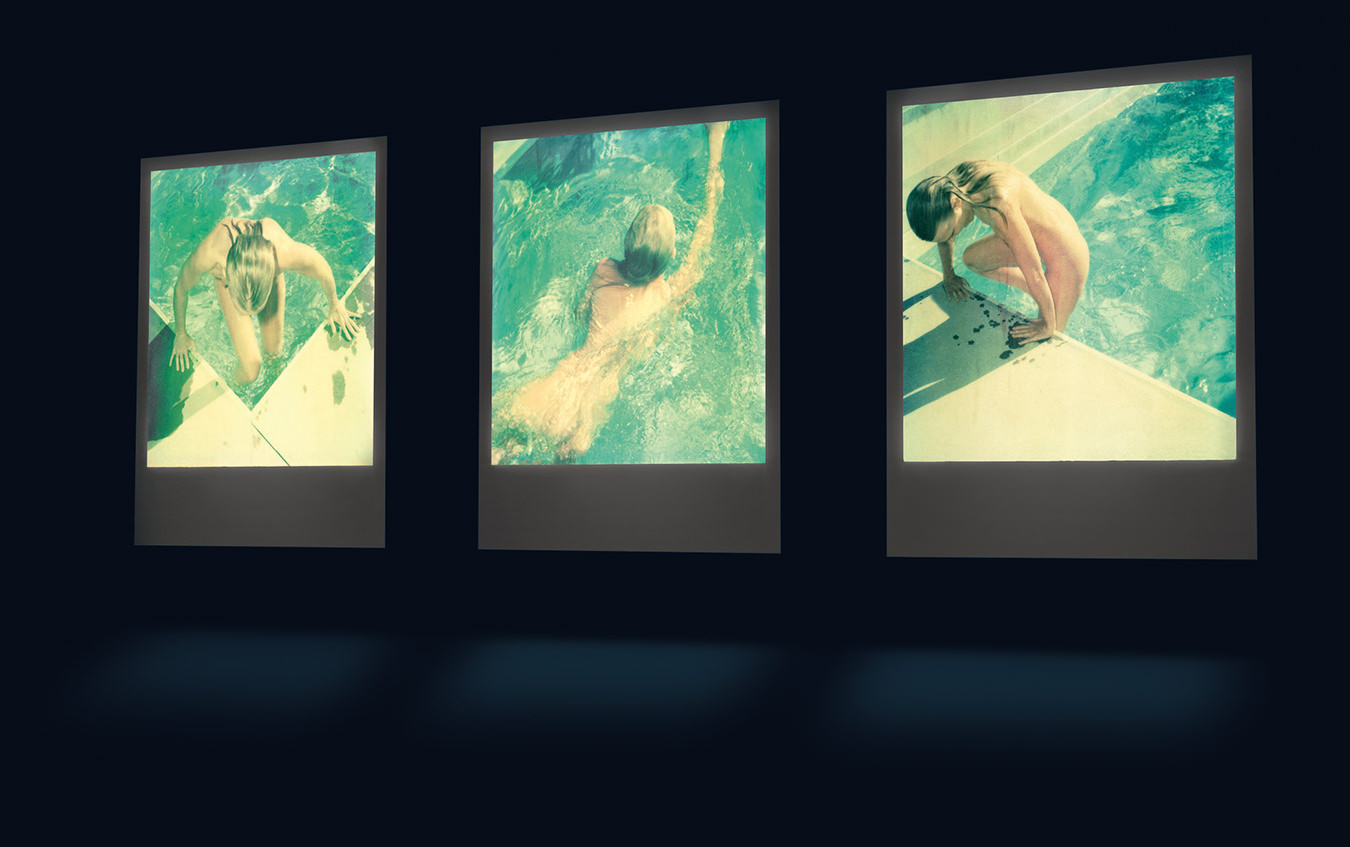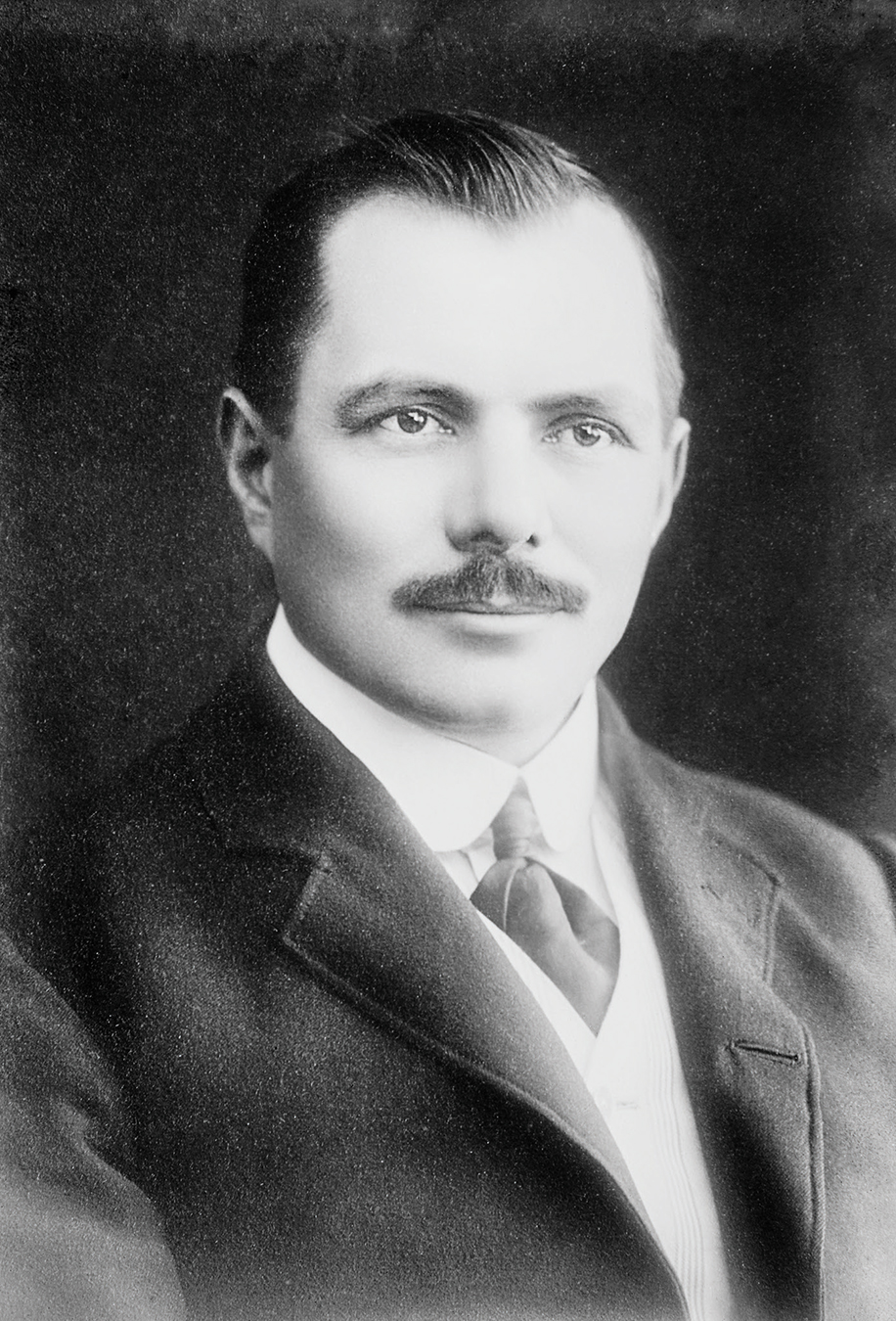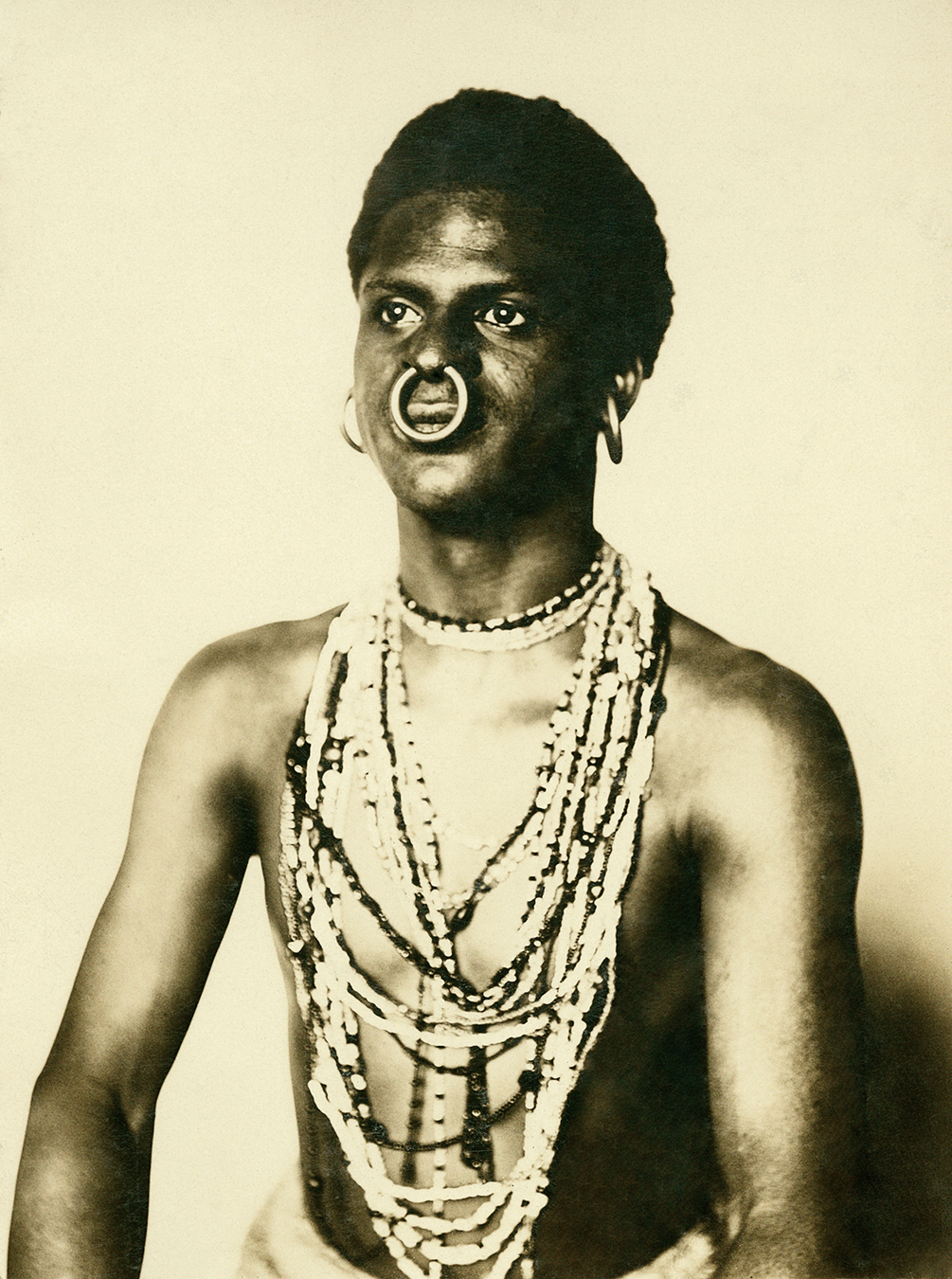-

Vauquois, France: French soldiers’ dining area underground with wine bottles, canteens, and a serving dish.
-

Nord-Pas-de-Calais, France: A stairway from an underground city to the trenches.
-

Nord-Pas-de-Calais, France: A street sign in an underground First World War city.
-

Picardy, France: These carvings read “Liberty leaving the world”; “September, 1917, a soldier of the 278”; “the disasters of the 20th century”; “the sun of my youth”.
-

Picardy, France: A sculpture of French soldier praying.
-
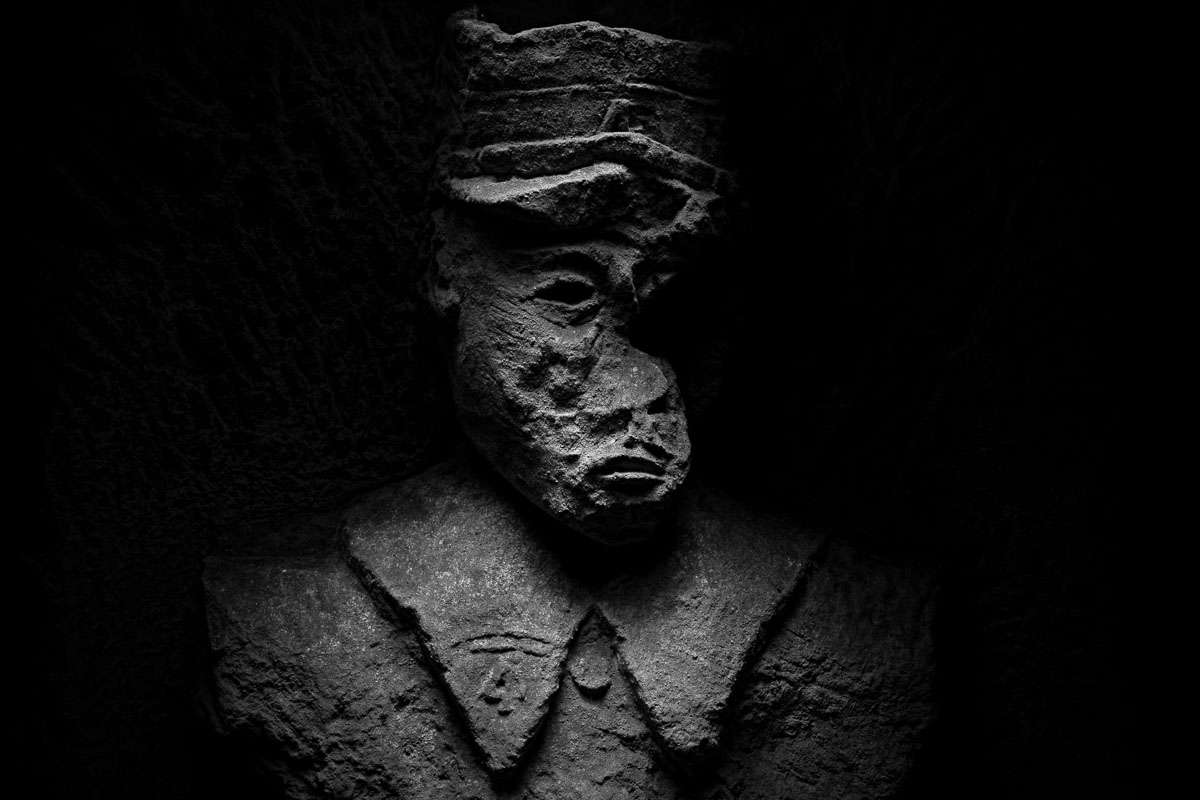
Picardy, France: A sculpture of French soldier wearing uniform of 1914.
-

Picardy, France: A former underground city beneath the trenches.
-
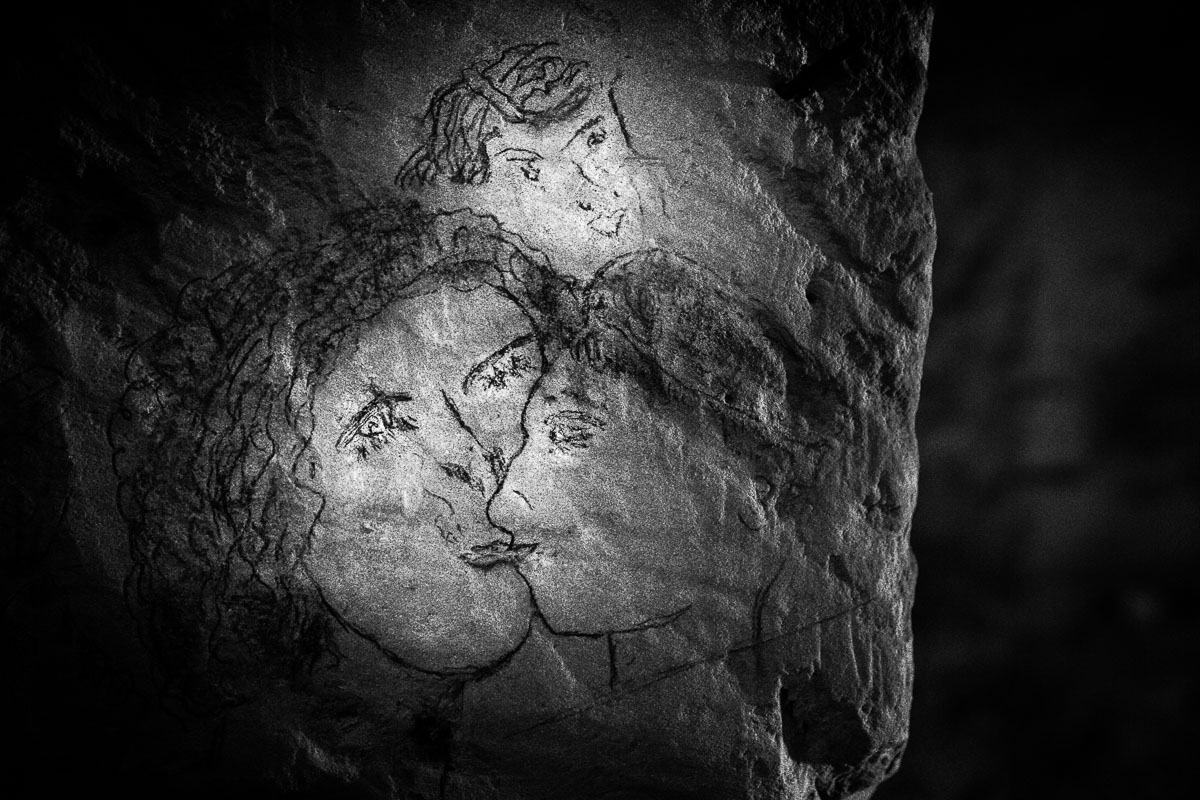
Picardy, France: A soldier’s graffiti.
The Hidden World of World War I
Photographing history.
Beneath the farm houses in the tranquil French countryside exists a forgotten city—rooms and passages of narrow and twisting quarries where the stone is soft enough to carve with basic tools. These spaces were battlefield refuge for First World War soldiers and became home to countless sculptures, carvings, and artifacts as well. Local landowners and historical associations have protected the remains for decades, fearing vandalism and dangerous visiting conditions, and few outsiders have been given access to the area.
A chance meeting with a French Ministry of Defence official landed Dr. Jeff Gusky and his camera among the lost artworks. Soldiers from the Commonwealth, France, Germany, America, and beyond possessed a wide range of talents—artists, poets, professors, labourers, cooks—and used this space beneath the trenches as a creative outlet, expressing their modern sensibilities and humanity in the face of war. For his project, The Hidden World of World War I, Gusky has captured nearly 2,000 black and white photographs of the wartime graffiti to be released over the next five years, leading up to the centenary of the war’s conclusion.
Photos ©2011-2014 Jeffrey Gusky. All Rights Reserved.
Originally published November 10, 2014.

